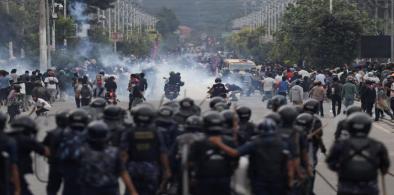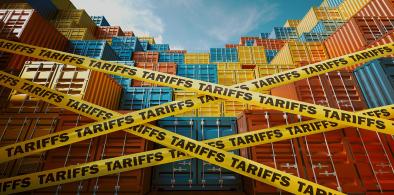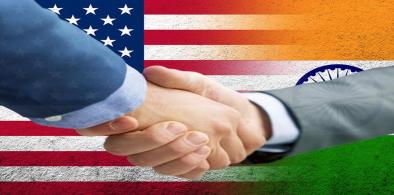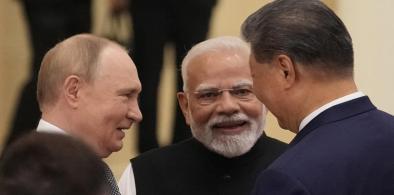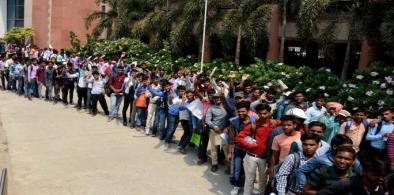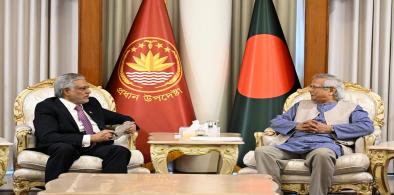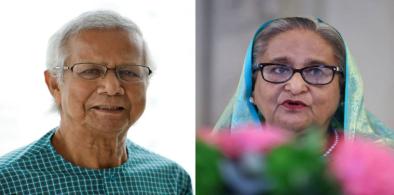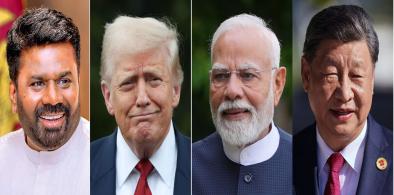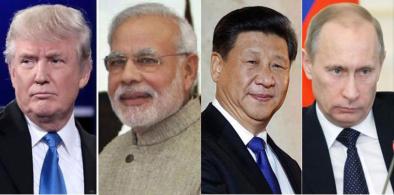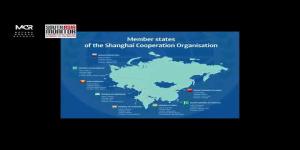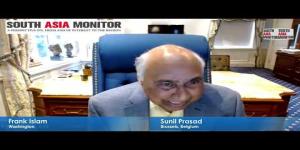Nepal, one of the world’s poorest countries, struggles with the South Asian region’s lowest per capita income and an unemployment rate approaching 13 percent, according to official estimates.
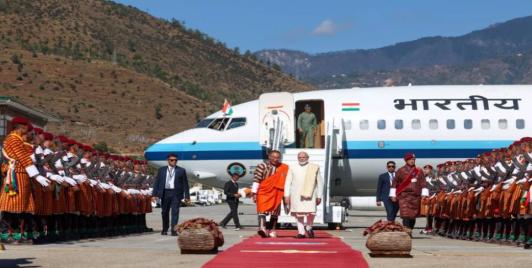
India-Bhutan Relationship Offers A Constructive Model For South Asia And A Peaceful Himalayan Region
Beyond India–Bhutan relations, the visit conveys a wider message to South Asia: cooperation grounded in respect, development, and stability remains essential in an uncertain global environment. As the region evolves, India appears to recognize the importance of maintaining strong partnerships without pressuring smaller neighbors or escalating strategic competition.
Red Fort Blast: India Facing A New Form Of Jihad?
The involvement of four doctors, one of whom allegedly executed the Red Fort blast, indicates a model that blends 'inspired' radicalisation with limited external facilitation. Interactions with certain outfits, Kashmiri terror commanders, and external handlers—if confirmed—point to an infrastructure that encourages attacks while maintaining plausible deniability.
The Nuclear Reckoning: Moment Of Awakening For India
It is time for India, along with like-minded nations across Asia, Africa, and Latin America, to articulate a shared agenda of non-alignment 2.0, not as a posture of neutrality but as a strategy of autonomy. The original Non-Aligned Movement (NAM) emerged from the Cold War’s bipolar tension; its modern counterpart must respond to multipolar volatility.
Endangered Indigenous Languages of South Asia: With Dominant Languages Replacing Mother Tongue, Are They Doomed To Die?
The world over, as is evident from the Atlas of endangered languages, there is a thrust of the dominant languages taking a precedence and most of the endangered languages are likely to disappear by 2100. Soon, possibly in the near future, the grand and great grand-children of the present generation may not be able to tell the story of their own mother tongue. Some of these languages will be lost forever and will only be limited to the pages of gazetteers and history books.
US Tariffs, Remittances and Regional Ripples: India's External Balance Management Being Closely Watched
Many in the Global South as well as key South Asian allies—including Nepal and Sri Lanka—are closely observing India’s approach towards macroeconomic stability. How India moves forward in the months and years to come will signal whether it emerges as a resilient regional rule-shaper or a reactive follower in the evolving financial system.
India’s Dogged Pursuit of Strategic Autonomy: Yielding to US demands would damage both India’s global ambitions and Modi’s domestic standing
Much of Washington’s tough posture stems from India’s reluctance to deepen its role in the Quadrilateral Security Dialogue (Quad). During his October 2024 visit to Tokyo, Jaishankar rejected Japanese Foreign Minister Shigeru Ishiba’s proposal for an “Asian NATO,” reaffirming India’s non-aligned stance. This slowed efforts to create a NATO-style architecture in the Indian Ocean, frustrating Washington.
Bangladesh’s Justice on Trial: When Victims Become Criminals
The stakes extend far beyond a single disrupted meeting or a dozen wrongful arrests. They concern whether Bangladesh will continue down the path of political mimicry, repeating the sins of the Awami League era under a different banner, or whether it can genuinely chart a new course—one in which dissent is not criminalized, mobs are not emboldened, and courts are not politicized.
Climate-Induced Devastation Poses Non-Traditional Security Threats for Pakistan
Regionally, Pakistan is face-to-face with water insecurity, that too at a time when strained ties with India have led to abeyance of the Indus Water Treaty and Pakistan’s dependence on those waters continues. To the northwest, Afghanistan also keeps pressing for its increasing dependence on the Indus waters due to its landlocked geographic location. This keeps ties with Afghanistan strained.
India Can Be The Balancer In Reshaping Global Governance
If India is treated as an independent balancer, global multipolarity becomes stable. If the West instead tries to “arm-twist” India, it only drives India closer to Russia–China alignment. A respected, autonomous India helps prevent both Western hegemony and China-centric hegemony — creating a truly balanced order.
Rising Youth Unemployment in India a Cause for Concern: Skill Development Will Need to Factor Global Shifts
Two demographic shifts are increasingly seen to be transforming global economies and labour markets: aging and declining working-age populations, predominantly in the developed economies, and expanding working-age populations, predominantly in the less developed economies.
Digital Farming is the Future: South Asian Governments Need to Connect Climate Proposals with Digital Inclusion Plans
Digital agriculture offers a path towards farm practice transformation in addition to increased adaptive capacity and mitigation of extreme climate shocks. The strategy involves a package of tools from satellite-based weather forecasting to artificial intelligence-based diagnosis of pests, mobile-based market access platforms, precision irrigation equipment, and monitoring of the health of soil through cloud-based services.
Pakistan’s Forgotten Daughters: The Silent Suffering of Hindu Women in a Theocratic State
According to Amarnath Motumal, former vice chairperson of the Human Rights Commission of Pakistan (HRCP), 20 or more Hindu girls are abducted and converted monthly in Pakistan. The number of documented cases of non-Muslim girls being compelled to marry Muslim men and convert to Islam as a result of forced marriage has increased noticeably. Girls are forbidden to contact their families after being forced to convert.
Bridging Gulf Investment Power and India’s Tech Talent: UAE–India Collaboration Can Redefine Future of AI Innovation
The UAE’s financial muscle and India’s AI talent base can together create an ethically grounded, globally competitive AI ecosystem. This collaboration can become a blueprint for cross-regional partnerships that strengthen innovation, digital sovereignty, and sustainable growth across the Middle East, South Asia, and Southeast Asia.
Strange Bedfellows: Why Pakistan’s Munir and Bangladesh’s Yunus Are Rekindling Ties
From a realistic perspective, the prospect of a Pakistan-Bangladesh axis does not herald a serious economic or strategic bloc. Instead, it signals the re-emergence of revisionist politics in South Asia. In seeking to rewrite history and align against India, both countries risk ignoring their own domestic crises.
An Assault on Democracy in Bangladesh: Need to Have an Inclusive Electoral Process
Bangladesh now stands at a perilous crossroads. Either the nation allows this unelected regime to continue dismantling democratic institutions, silencing dissent, and rewriting history—or its citizens rise to reclaim their rights. Democracy cannot endure without inclusivity
Sri Lanka Needs to Find a ‘Political Common Ground’ in Its Foreign Policy
Championing a rules-based maritime order in the Indian Ocean, which Sri Lanka has long called for since its 1971 ‘Indian Ocean Peace Zone’ (IOPZ) proposal and ensuring strict adherence to the provisions of the ‘UN Convention on the Law of the Sea’ (UNCLOS), will reinforce Sri Lanka’s credibility and also encourage cooperative stability in the Indian Ocean.
Trump's Tariffs and India's Strategic Dilemma: Acid Test for Modi Government
For Modi, the political cost of appearing to bow to American pressure may be almost as high as the economic cost of resisting it. In the end, the tariffs are not just about commerce. They are a test of whether India can still straddle the fault lines of great-power rivalry—whether the world’s most populous democracy is being forced into the uncomfortable role of choosing sides.
US Positioning on Crypto Currency has implications for BRICS and South Asia
With the Ukraine war and the resulting sanctions making it difficult for Russia to trade with its allies, being barred from using SWIFT or the US dollar, it resulted in Russia resorting to local currencies to trade that resulted in the BRICS currency drawing adverse attention in Washington and gaining global imprtance.






